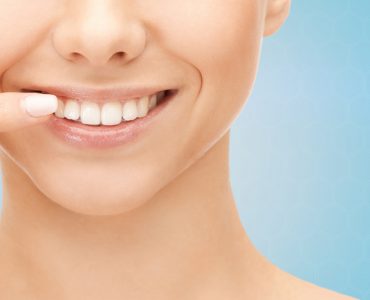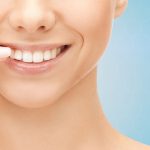Oral thrush is a non-contagious fungal infection of the mouth, caused by fungus called candida. It is commonly found in healthy babies over a month old and can repeat itself during the first two years. It is less common when babies grow beyond two years.
Normally, oral thrush in babies cannot be associated to other medical conditions or ailments.
Symptoms
The most visible symptom of oral thrush in babies is the appearance of white spot/s or patches on the gums, palate (roof of the mouth) and insides of cheeks. The patches may sometimes look cream or yellow colored like cheese or curd and can join to form bigger areas called plaque. When scraped off, the patches reveal an underlying red and raw area which might bleed sometimes. Although pain-free, these affected areas can feel sore and cause trouble to the baby during feeding. As a result babies might reduce feeding. Another symptom could be drooling of more saliva than they normally do.
Causes
All babies have harmless levels of fungus or yeast in their mouth. It is when the fungus multiplies abnormally that causes infections like oral thrush.
Oral thrush is caused by overgrowth of candida albicans fungus in the mouth. In babies, it infects the inner membranes or mucosa of the mouth. It is more commonly seen in premature babies as their immune systems are not strong to resist infections and they have not received enough of mother’s antibodies to fight it.
Antibiotics also increase risk of getting thrush, as the antibiotics can kill the harmless bacteria in the baby’s mouth, allowing abnormal breeding of harmful fungus. So if the breastfeeding mother or the baby is on antibiotics for an infection, chances of the baby getting oral thrush are high.
Poor oral hygiene is rarely a cause for babies getting infected with oral thrush.
Diagnosis
The pediatrician will do a physical examination of the baby’s mouth to diagnose the symptoms and confirm presence of the infection.
Treatment
Mild infections of oral thrush in babies are self treating and can often disappear in a few days. In concerning cases, GP’s advice should be taken.
Antifungal medicines can be prescribed if oral thrush does not clear up in a few days. Miconazole is an antifungal medication which kills the fungus. It is in gel form and small amount needs to be applied to affected areas with a clean finger. Dosage amount and length of treatment depends on baby’s age and severity of symptoms and will be clearly advised by the doctor. Another medicine called nystatin can be prescribed if baby does not respond to miconazole or even as an initial treatment. Nystatin is a liquid or suspension medicine and can be applied using an oral dispenser supplied along with.
The medicines are more effective if used after feeding the baby so the medicine remains on the affected areas for a longer period. The doctor might recommend to continue the treatment for two more days after the symptoms subside.
Prevention
Below steps can help in preventing oral thrush in babies
All dummies or mouth toys should be regularly sterilized
Feeding equipment like milk bottles, teats should be cleaned and sterilized before every feed.
It may help to give a sterilized water drink after every feed to rinse the mouth clean of any left-over milk.
Complications
Soreness in mouth can make the baby reluctant to drink milk or to feed.
Breast-feeding mothers can get the infection from the baby infected with oral thrush.













